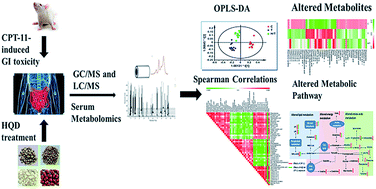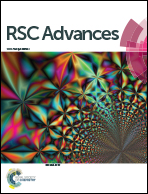Metabolomic study of Chinese medicine Huang Qin decoction as an effective treatment for irinotecan-induced gastrointestinal toxicity†
Abstract
The Huang Qin Decoction (HQD) has been used in China for over 1800 years for the treatment of gastrointestinal ailments. As a formulation derived from HQD, PHY906 shows an attenuation effect on chemotherapeutic-induced gastrointestinal toxicity. Method: to explore the mechanism of irinotecan (CPT-11)-induced gastrointestinal toxicity and the ameliorative effect of HQD, an integrated gas and liquid chromatography-mass spectrometry (GC/MS, LC/MS) approach was applied to detect serum metabolome changes in rats following a treatment of CPT-11 with/without HQD. Results: significant alterations in metabolic profiling were observed in CPT-11-treated groups versus control groups. HQD attenuated the side-effects with reversed glutamine, tryptophan and lipid metabolisms. Conclusion: this study demonstrated that HQD can effectively decrease CPT-11-induced side-effects, and the metabolism pathways involved were speculated to be novel targets for reducing CPT-11-induced gastrointestinal toxicity.


 Please wait while we load your content...
Please wait while we load your content...